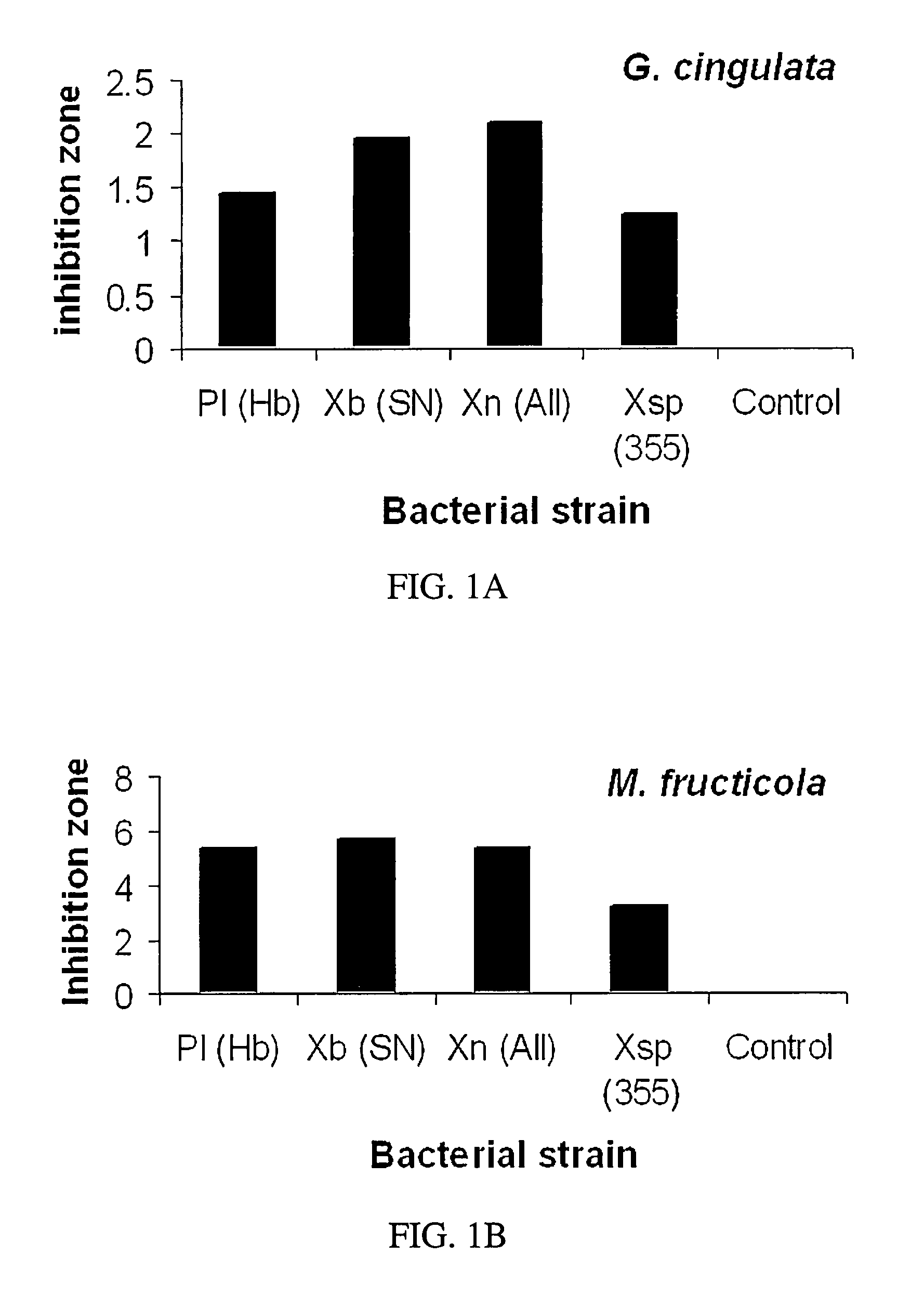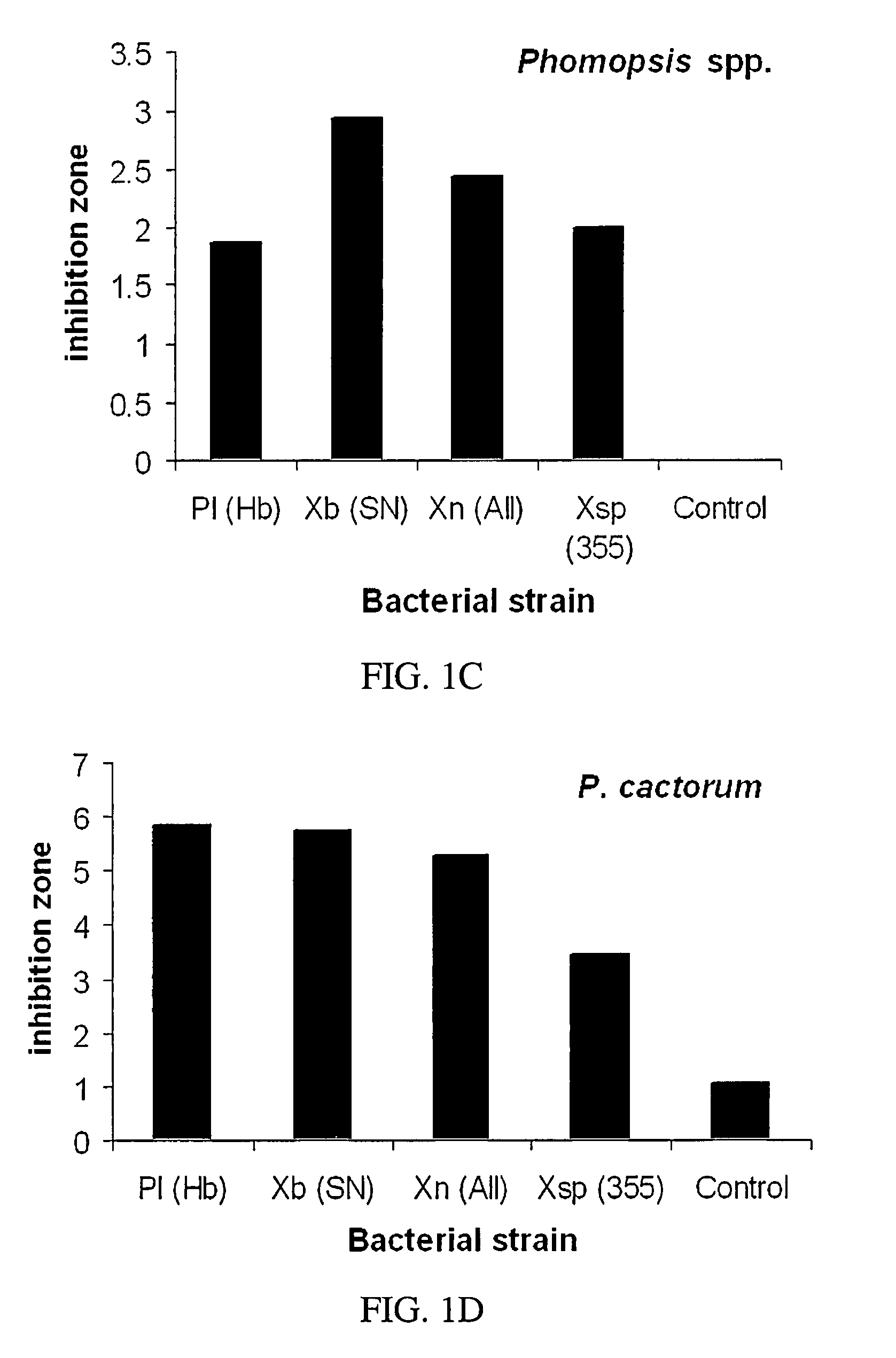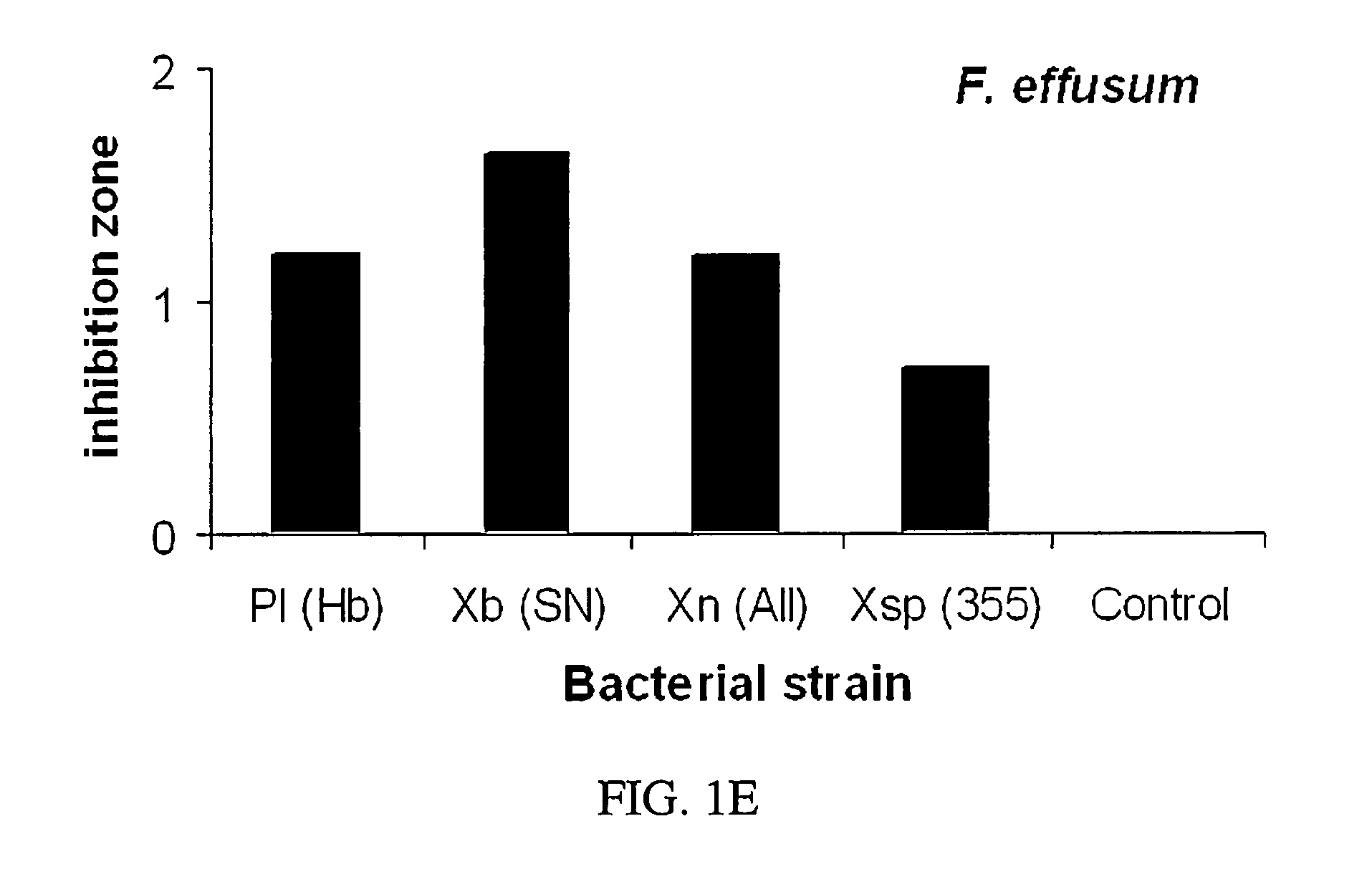Method for controlling fungal pathogen with bacterial metabolite
a technology of metabolites and pathogens, applied in the direction of biocide, microorganisms, biochemistry apparatus and processes, etc., can solve the problems of toxic to wildlife and other non-target species, chemical fungicides are harmful to vertebrates (humans), and cannot be grown usefully, etc., to achieve the effect of increasing agricultural outpu
- Summary
- Abstract
- Description
- Claims
- Application Information
AI Technical Summary
Benefits of technology
Problems solved by technology
Method used
Image
Examples
example 1
Antimycotic Activity In Vitro Standardized Via Initial Cell Count
[0062]Antimycotic activity was compared to a quantity of metabolites standardized by initial cell count. Metabolites were extracted from batch one bacteria isolates as stated supra. Approximately, 3×1012 bacteria cells of each strain were used in the extraction and the resulting metabolites were dissolved in 20 ml of acetone. Suppressive activity of the metabolites was determined by measuring zones of inhibition on 100 mm Petri dishes containing potato dextrose agar based on protocol as described by D. I. Shapiro-Ilan et al. (2002) Journal of Invertebrate Pathology, 81: 86-93, and incorporated by reference herein.
[0063]Agar surfaces were sprayed with the fungal or oomycete spores (1×105 to 2×107 per plate) of Glomerella cingulata, M. fructicola, Phomopsis sp., P. cactorum, or F. effusum with an airbrush. A filter paper disc (1 cm diameter) with bacterial metabolites added (20 μl) was placed in the center. Each plate re...
example 2
Antimycotic Activity In Vitro Standardized Via Concentration
[0065]Bacterial metabolites were also standardized based on concentration to compare antimycotic activity. Metabolites were extracted from both bacteria metabolite examples as stated supra. P. luminescens (Hb) and X. bovienii (SN) were included to facilitate qualitative comparison between assays standardized based on cell count versus weight of metabolite. Approximately, 7×1012 bacterial cells of each strain were used in the extraction and the resulting metabolites were brought to a concentration of 50 mg per ml. Suppressive activity of the metabolites was determined by measuring zones of inhibition on potato dextrose agar plates as described supra. In these assays, 2 mg of metabolite was suspended in 40 μl (50 mg per ml) of acetone and was added to the filter paper in each Petri dish. Each treatment and control was replicated three times.
[0066]Prior to standardizing by concentration, total yields of metabolites (from 7×101...
example 3
Phytotoxicity Tests and Suppression of P. Cactorum on Pecan Leaves
[0067]Suppression of Phytophthora cactorum on detached pecan leaves was addressed based in part by procedures described by K. K. Ng, et al., (1997) Canadian Journal of Plant Pathology, 19: 125-132, and incorporated by reference herein. The metabolites used in these assays were derived from bacteria isolates that were standardized based on initial cell count and dissolved in 20 ml acetone as described supra (example one). Treatments included 1%, 6%, and 12% dilutions of the original concentrations plus a distilled water and acetone control. Agar plugs of P. cactorum were placed on young pecan leaves of a Stuart variety previously been sprayed with 200 μl of the treatment or control by air brush and allowed to dry. The leaves were placed on 1% water agar plates and incubated at 25° C. for two days. The P. cactorum infection and phytotoxicity of metabolites were then assessed.
[0068]P. cactorum infection was determined by...
PUM
 Login to View More
Login to View More Abstract
Description
Claims
Application Information
 Login to View More
Login to View More - R&D
- Intellectual Property
- Life Sciences
- Materials
- Tech Scout
- Unparalleled Data Quality
- Higher Quality Content
- 60% Fewer Hallucinations
Browse by: Latest US Patents, China's latest patents, Technical Efficacy Thesaurus, Application Domain, Technology Topic, Popular Technical Reports.
© 2025 PatSnap. All rights reserved.Legal|Privacy policy|Modern Slavery Act Transparency Statement|Sitemap|About US| Contact US: help@patsnap.com



